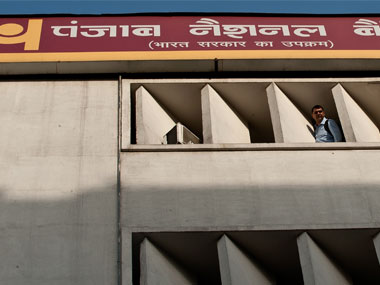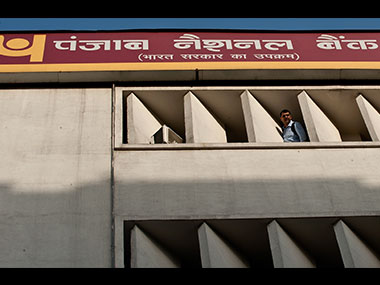Corporate frauds like the Nirav Modi scam, phenomenal rise in non-performing assets (NPAs), new provisions like bail-in under Financial Resolution and Deposit Insurance (FRDI) regime are a multi-pronged conspiracy aimed at weakening India's predominantly public-owned banking system. This would result in corporate appropriation of public savings besides diverting household savings into speculative investment to fuel market bubbles. Thus, the Nirav Modi scam is not an aberration.
The complex interlinkages in the multitude of processes and policies need to be unravelled. Domestic savings, domestic investment and domestic market are the three pillars of Indian economy and were mainly responsible for largely insulating it from the contagion effect of global financial crisis. The banks account for 70 percent of India's household savings, indicating the credibility they enjoy. Public sector banks account for a lion's share of these household bank savings. Thus, the public ownership of India's financial system greatly contributed to the stability in India's banking system despite problems of work culture and associated irritants. This was even acknowledged by the then prime minister and the messiah of free market reforms Manmohan Singh in his address to the G-20 summit.
There is a systematic attack on India's public-owned financial system. This is not a policy aberration, but, an orchestrated attempt to erode people's confidence in the Indian banking system.
Firstly, the mounting NPAs and the RBI guidelines to make suitable provisions for such bad loans are seriously eroding the profitability and thereby the viability of these banks. While the common man saves his earnings in these banks, the corporates appropriate these savings. This is evident from the fact that the big corporates account for the major chunk of NPAs in Indian banks, especially the public sector banks. 12 of the largest corporate defaulters, whose names are yet to be officially revealed, account for around a quarter of the NPAs in the commercial banking system. As noted economist CP Chandrasekhar writes in Frontline,"When the ratio of stressed assets to gross advances in the banking system has crossed the double-digit mark, or when stressed assets are a large proportion of outstanding advances, a few borrowers account for a large share of defaults. This suggests that banks have been willing to build their loan books with a large share of advances to some borrowers, who it is now clear were potential defaulters. "

File image of Nirav Modi. News18
It is difficult to believe that this can be the result of only fraudulent decision-making by few incompetent or corrupt bank officials. All these big borrowers enjoy political patronage irrespective of which party or coalition rules the nation. Thus, politician, business man, bureaucrat, criminal nexus operates so blatantly in the financial system too. This is more evident if one looks at the recurring incidents of increasing number of corporate frauds happening in India's premier banks. The Nirav Modi episode and its manifestation is one such latest example.
A middle class law abiding citizen with clear repaying capacity finds it difficult to get a bank loan even after mortgaging his assets which are worth much more than the loan amount. A farmer has to commit suicide when he is named and shamed by banks for not being able to repay his few thousands loan as the nature and market cripple his livelihood. But, Nirav Modi and the likes can easily get away for years together by taking LOUs to the tune of thousands of crores, bypassing the core banking solutions and regulatory supervision.
The concurrent audit, internal audit, external audit, random audit and finally even the RBI audit fail to either prevent it or notice such sinister machinations by Nirav Modi & Co, catapulting India into high ranks in 'ease of committing fraud index'. Should the citizen of India believe that all this is a mere aberration and a crime committed by few individuals? It is a systemic malaise aimed at eroding the confidence of people in India's banking system, especially the public sector banks.
Despite mounting bad loans, the perception that the liabilities of these banks are backed by a sovereign guarantee has prevented a run on these banks. The controversial bail in provisions and the talk of hair cut in the Financial Resolution and Deposit Insurance (FRDI) bill 2017 precisely aims at destroying this public perception.
Surprisingly, the corporates who are playing havoc with these financial institutions with their bad repaying behaviour and fraudulent practices are the beneficiaries of their consequences too.
The deteriorating financial health of public sector banks is concomitant with policies that allow industrial houses to own banks. Such a measure would lead to further and more direct appropriation of public savings through connected lending.
Meanwhile, the loss of credibility for the banks would result in diversion of household savings into speculative sectors like capital markets. The average Indian is away from equities market due to its volatility and the inherent risks associated with it. But the major objective of weakening the banking system is to fuel investments in stock markets. This will create more stock market bubbles as the equities do not reflect the real economic trends.
If a corporate house wants to set up an industry by borrowing from a bank, it has to pay interest and show collaterals. The raising of resources in the stock markets does not need all this. Thus, diversion of people's savings from banks to stock markets would offer the big business houses with abundant and cheap fiscal resources.
But, such an eventuality would deprive Indian economy of much-needed financial intermediation to sustain its broad-based economic growth and put the hard-earned household savings at the mercy of rapacious bulls and bears.
Published Date: Feb 20, 2018 07:36 AM | Updated Date: Feb 20, 2018 07:36 AM


